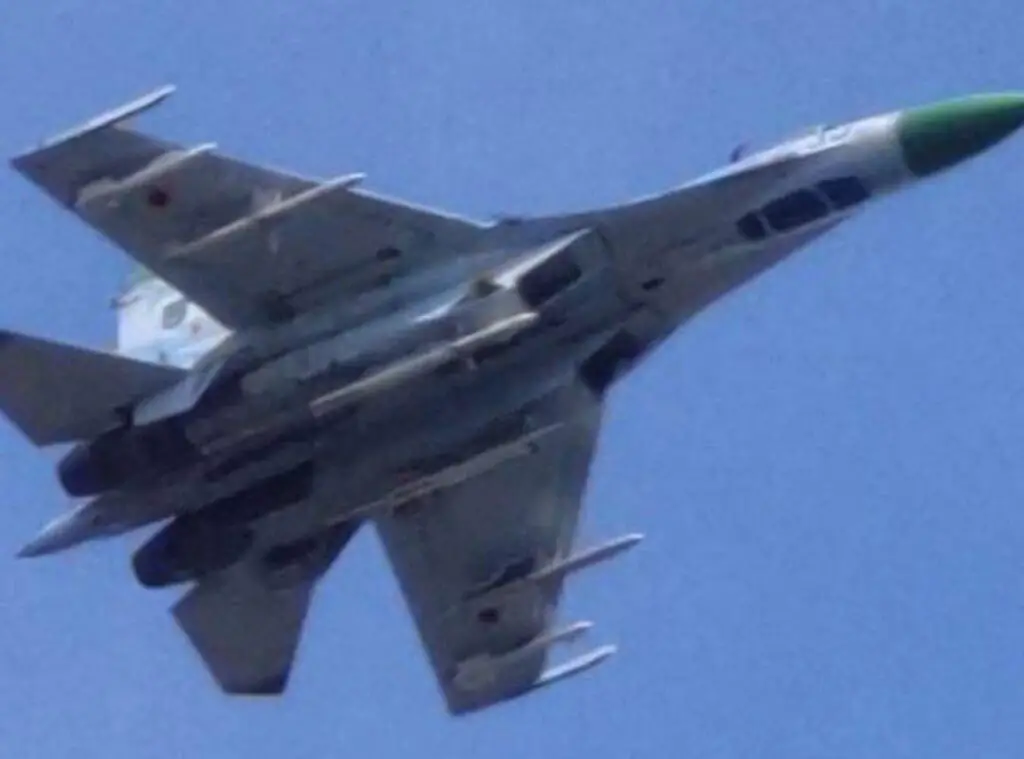Russian air defense systems successfully destroyed two American AGM-88 HARM cruise missiles on September 11, says the Russian Defense Ministry.
The missiles were intercepted by Russian air defense systems in the Kharkiv region, 5 kilometres from the border with the Belgorod region and about 35 kilometres from Belgorod. The incident was very serious since it was the first case of using American missiles near the Russian border, it adds.
The missiles can be carried by the Ukrainian Air Force’s MiG-29 and Su-27 fighter aircraft. Russia estimates that Ukraine has at least five aircraft that carry U.S. made missiles.
Ironically, the hunter becomes hunted
The AGM-88 HARM, or high-velocity anti-radiation missile, is a supersonic air-to-surface tactical missile intended to locate and destroy opponent air defence systems equipped with radar. The AGM-88 can be used with little pilot input. The antenna and seeker head of the proportional guiding system that focuses on enemy radar signals is installed in the missile nose. The AGM-88 HARM missile is propelled by a smokeless, solid-propellant, dual-thrust rocket engine. The range of the missile is about 150 km.
HARM calculates the target’s location and can hit it even if the radar has been turned off. The latest modifications are designed to target the radars equipped with changing operating frequencies.
It is not the first time Russia has hunted American made hunters.
Russian air defences intercepted four HARM missiles and thirty-four HIMARS, Uragan, and Olkha rockets on September 5.
According to Lieutenant General Igor Konashenkov, four anti-radiation HARM missiles manufactured in the United States were shot down between Chernobayevka and Novaya Kakhovka in the Kherson Region. Five drones, including a Bayraktar TB2, were shot down by Russian air defences in the Kharkiv/Kharkov Region and the Donetsk People’s Republic on the same day.
A day of Russian Radar carnage or a myth
The Ukrainian Armed Forces General Staff announced the destruction of fourteen Russian air defence systems and radar stations between August 5 and 7. Since Ukraine did not have the required number of aircraft for the job, it is assumed that modified ground launchers launched the HARM. The Ukrainian claim is feasible because anti-radar missiles were not previously utilised, and Russian radars worked with little interference. Logic would suggest that the overall effect of the surprise attack qualifies as carnage. I hope that one day we will uncover the particulars of this operation, which was expected to cost Russia hundreds of millions of rubles in equipment and hundreds of personnel.
The HARM missile is tuned to the radiation of the radar, adjusts to any frequency, and can either be programmed in advance to hit a specific type of radar or launched into the enemy’s air defense area in order to independently search for and destroy radars. The rocket itself does not give any active radiation, and it cannot be detected using electronic intelligence; only radar can detect it. But it is difficult to intercept the missile because it is small and has a speed of 2.2 thousand kilometres per hour; that is, the attack and the search for a target are very fast. If the enemy turns off the radar, this will not save him as HARM remembers the coordinates of the radar radiation and flies to the target’s last known location. The missile warhead of 66 kg contains up to 12 thousand striking elements; therefore, it is guaranteed to destroy the radar and inflict losses on the crews and all objects around.
The efficacy of the AGM-88 HARM in Ukraine seems overstated till we have a correct picture of their effectiveness. Either Ukraine failed to launch a swift, devastating assault on Russian radars in August, or the Russians have adopted new strategies.
Ukrainian Air Force and AGM-88 HARM
According to the U.S. Undersecretary of Defense for Policy, Colin Kahl, the United States adapted HARM high-speed anti-radiation missiles for the Ukrainian Air Force’s MiG-29 aircraft. In August, AGM-88 missiles manufactured in the United States began attacking Russian air defence installations in Ukraine.

HARMs are intended to increase the effectiveness of Ukrainian UAVs and HIMARS MLRS, as the Russian Forces are now unable to form a dense radar field in the operational-tactical zone due to the high risk. Theoretically, with the UAV and MLRS, the HARM can also be launched, and radars and anti-aircraft missile systems of the Russian air defence, which are activated to counter HIMARS, can be hit. A simultaneous firing of 20 to 30 HARM missiles can eliminate the Russian air defence from 100 to 200 square kilometres.
However, this does not seem to be the case. Like other U.S. and Western equipment, the HARM may also be malfunctioning. Among the known cases, one HARM missile had hit a residential building and did not explode; in another, the missile did not explode. The Russians seem to have found methods to counteract them, maybe using electronic warfare systems, radar reflectors, etc. At the same time, the presence of HARM has made it difficult for unrestricted airspace monitoring, and it will force the Russians to raise the resources required to counter it.
